
Table of contents:
- Microsporia: how to save a furry cat fur coat
- What is microsporia in cats
- Forms of the disease
- Diagnosis of microsporia in cats
- How to treat a disease at home
- Features of the clinical manifestations of microsporia in pregnant cats and kittens
- Disease prevention
- Danger of microsporia for humans and other animals
- Veterinarian recommendations
- Author Bailey Albertson [email protected].
- Public 2024-01-17 22:26.
- Last modified 2025-06-01 07:32.
Microsporia: how to save a furry cat fur coat

Having found bald spots on a cat's fur, the owner often suspects a ringworm infection. At this moment, it is important not to succumb to either frustration or panic - ringworm is curable, the main thing is to act correctly.
Content
-
1 What is microsporia in cats
- 1.1 Causes of microsporia
- 1.2 Factors in the development of the disease
-
2 Forms of the disease
2.1 How microsporia develops
- 3 Diagnosis of microsporia in cats
-
4 How to treat the disease at home
- 4.1 First aid to a pet
-
4.2 Treatment regimen depending on the stage of the disease
4.2.1 Photo Gallery: Microsporic Skin Lesions in Cats
-
4.3 Medicines for local treatment of microsporia
- 4.3.1 Ointments
- 4.3.2 Solutions
- 4.3.3 Shampoos
- 4.4 Drugs for systemic therapy
- 4.5 Vaccines
-
4.6 Table: Overview of Medicines Used to Treat Microsporia
4.6.1 Photo gallery: medicines for the treatment of microsporia
- 4.7 Effective folk remedies
- 4.8 Rules for conducting medical procedures
- 4.9 Video: Treatment of lichen in pets
- 4.10 Taking care of sick animals
- 4.11 Video: diagnosis and treatment of lichen in cats
- 5 Features of the clinical manifestations of microsporia in pregnant cats and kittens
- 6 Prevention of disease
- 7 Danger of microsporia to humans and other animals
- 8 Recommendations of veterinarians
What is microsporia in cats
Microsporia is a fungal disease that affects the skin and its derivatives - hair and claws.
The causative agent of microsporia is a fungus of the genus Microsporum, the disease of cats is most often caused by the species Microsporum sanis - more than 90%; as well as Microsporum gypseum.

The reservoir of Microsporum canis is sick animals - cats, dogs; it is the main causative agent of microsporia
All types of pathogen multiply by spores, and also have a vegetative form - mycelium. If you look at the affected hair under a microscope, you can see randomly located spores, which can be both in the hair follicle and inside it, and mycelium filaments in the hair itself, especially in its distal (distant from the skin) part.
The causative agent is characterized by resistance in the external environment: remains in wool from affected animals from 2 to 5 years; in soil - up to 2 months, where it can additionally multiply under suitable conditions. Vegetative forms can be destroyed by the action of 1-3% formaldehyde when the solution is applied for 15 minutes, with 5-8% alkali solutions - for 20 minutes. Disinfection is possible by boiling for three minutes.
Microsporia reasons
The source of infection is infected animals, especially stray cats and dogs, contributing to the free transmission of the pathogen and maintaining its focus by contaminating their habitat with infected wool, epidermal plates (upper layer of the skin), and fallen off scabs. Infection is possible both through direct contact and indirectly - through care items, bedding, toys, clothes, furniture. Fungal spores can also be airborne.
Disease development factors
When a pathogen is encountered, the development of the disease does not occur in all cases. The immune system of both cats and humans is able to effectively suppress the mouth of the microsporia pathogen and prevent the development of the disease. Susceptibility to disease causes a weak response of cellular immunity.
When exposed to factors that weaken the protective effect of immunity, infection occurs. Also, getting a high infectious dose of the pathogen predisposes to infection.
Factors predisposing to the development of microsporia include:
- high frequency of contacts with sick animals;
- free walking of the pet;
- age - kittens up to 12 months and adult pets are most susceptible after 10 years;
-
breed - Persian and Himalayan cats of all ages are especially predisposed, regardless of the conditions of detention;

Persian cat The Persian cat is very susceptible to microsporia, therefore, it requires careful attention to the condition of the coat and skin.
- coat length - microsporia more often affects long-haired cats, this is due to the fact that their coat accumulates fungal spores in much larger quantities than in short-haired cats;
- crowded keeping of cats;
- using common grooming tools.
Factors that weaken the immune system include:
- infectious diseases;
- exacerbation of chronic diseases;
- pregnancy;
- stress (possibly even from moving or the appearance of a new pet / family member in the house);
- external parasites (fleas);
- helminthiasis;
- taking certain medications (corticosteroids, cytostatics);
- malnutrition.
Forms of the disease
For the development of the disease, it is necessary for the spore of the pathogen to enter the cat's skin. When the immune system is weakened, spores germinate on the skin surface and penetrate into the hair follicles, followed by hair destruction. At the site of the growth of the fungus, inflammation and itching appear. It is also important that healthy cats (and dogs) with a strong immune system can carry fungal spores on their fur, infecting other animals and humans, but they themselves do not get sick (asymptomatic carriage).
The incubation period is 1-4 weeks, but it does not matter much, since in the early stages the disease is subtle.
Clinical forms of the disease:
- Superficial - manifested by loss of hair and peeling of the skin, expressed in varying degrees: from small and subtle areas to extensive areas of damage. In some cats, an inflammatory reaction begins with the separation of exudate, which, when dry, forms crusts.
- Atypical form - forms areas with thinning of the coat or hairless without inflammation, the coat becomes unkempt, hair becomes brittle, dandruff may appear. Sometimes the disease proceeds as an intensified molt, after which the thickness of the coat, characteristic of a sick cat, does not recover.
- Follicular - rare in cats. It is characterized by pronounced inflammation of the skin with the formation of abscesses and purulent scabs. It proceeds with the attachment of a secondary bacterial, usually coccal, flora.
How microsporia develops
In cats, foci of microsporia can appear everywhere, but more often the head, paws and tail are affected:
- At first, barely visible patches of flaky skin appear on the skin, sometimes a rash, there may be a small number of crusts. Often, at its onset, the disease goes unnoticed, especially if the pet has long hair.
- On the affected areas, hair loss occurs with the formation of round bald patches covered with grayish skin that is flaky with the formation of scales.
- If untreated, the lesions increase in size, merge with each other and form extensive surfaces without a wool cover. With the localization of foci on the paws, claws may be involved, which begin to exfoliate and deform, as well as the pads of the paws.
Diagnosis of microsporia in cats
For diagnostics, examination data, collection of information about how the disease developed, as well as general information about the cat's health and conditions of keeping are of great importance. Experienced owners are able to suspect a fungal skin lesion in a cat on their own. But also competent cat owners and veterinarians know about the existence of a group of diseases of a non-fungal nature, which are accompanied by the formation of patches of alopecia areata (alopecia). These include:
- parasitic skin diseases (scabies, demodicosis);
- allergic dermatitis;
- bacterial dermatitis;
- endocrine pathology;
- vitamin deficiency, especially a lack of vitamin A;
- seborrhea;
- stress;
- oncological diseases.

It is impossible to confirm the diagnosis of microsporia without the participation of a veterinarian, even if we take into account the visibility of the symptoms
To confirm and differentiate the diagnosis, the following are used:
- Examination of the affected coat, as well as scraping the skin under a microscope to detect the mycelium of fungi and their spores. Refers to express diagnostic methods. Allows you to make a diagnosis in half of the cases.
- The use of Wood's lamp refers to express methods. Under the ultraviolet rays of Wood's lamp, areas of the coat affected by microsporosis glow green due to the effect of luminescence. However, the method is effective only in a part of Microsporum canis strains, which limits its diagnostic value. The method can be useful when it is necessary to quickly conduct diagnostic screening in a large number of animals.
- Cultivation of the pathogen on nutrient media is an accurate method that allows you to isolate the pathogen by sowing the collected material on nutrient media in a bacterial laboratory. It is characterized by high accuracy, but requires a significant amount of time - up to 10 days.

Wood's lamp allows you to detect foci of microsporia, which glow brightly under ultraviolet radiation
How to treat a disease at home
At home, the veterinarian's prescriptions are fulfilled. It is impossible to cope with the pathogen by self-medication, so you should not waste time.
First aid for a pet
The first help to a pet if it finds peeling, scales, foci of thinning of the coat or baldness on its skin will be delivery to the veterinarian for examination and diagnosis. There are many diseases characterized by focal hair loss, and not all of them are cutaneous. In no case should you bathe your pet. This will provoke the spread of the fungal infection to new areas of the skin and coat with the formation of extensive zones of fungal infection.
Treatment regimen depending on the stage of the disease
With limited skin lesions with a generally satisfactory condition of the animal, treatment is carried out with the daily use of local antifungal agents - solutions, ointments, sprays.
With the widespread nature of the lesion, especially with infection of the claws, as well as with the ineffectiveness of local therapy, antifungal agents of systemic action are used. Additionally, you may need drugs from other groups, for example:
- keratolytics - with a pronounced process of peeling and thickening of the epidermis due to fungal infection to facilitate the penetration of the active substances of local antifungal drugs;
- antibiotics - for secondary bacterial dermatitis;
- hepatoprotectors (drugs to protect the liver) - as a cover against the hepatotoxic effect of systemic antifungal drugs;
- immunostimulants - with extensive lesions.
Photo gallery: microsporic skin lesions in cats
-

Microsporia foci in the eye and nose of a kitten - Kittens under one year old are easily infected with microsporia due to the immaturity of the immune system
-

Microsporia lesions on the hind legs and tail - Microsporia often affects the legs and tail
-

Microsporia on the ear - The location of the microsporia focus in the ear area often causes otitis externa
-

Microsporia on the pads - Microsporia causes damage to the skin of the paw pads, interdigital spaces, as well as claws, leading to their deformation
Medicines for local treatment of microsporia
Medicines for the local treatment of microsporia can be used alone or in combination with systemic therapy.
Ointments
Ointments are used to treat small infected areas. Their use often limits the fact that cats lick them. Ointments and creams are used:
-
antifungal action:
- Miconazole;
- Ekodax;
- Mycoseptin;
- Nizoral;
- Clotrimazole;
-
containing tar, sulfur and creolin - these agents are toxic and effective, they are used in animals with initial forms of the disease when it comes to saving money:
- Sulfuric ointment;
- Yam ointment;
- Zoomycol;
- Enikonazole.
Solutions
For the treatment of microsporia, it is possible to use solutions:
- imaverola - bathing and spraying;
- thermikona - a convenient spray form;
- Exoderil.
The solutions are applied both over the coat and against hair growth.
Shampoos
Shampoos have a short-term effect and are not used on their own for treatment, but they can have a positive effect. Shampoos are used:
- Doctor;
- Veterinary Formula ANTISEPTIC & ANTIFUNGAL;
- Nizoral.

The use of shampoos allows both to reduce the amount of pathogen on the skin and hair of the cat, and to prevent contamination with spores of the surrounding space
Systemic therapy drugs
Drugs for systemic therapy are prescribed for a long time, the minimum course is 6-8 weeks:
- itraconazole (Sporanox, Irunin, Intranox) - the most effective drug for the treatment of dermatomycosis in cats;
- terbinafine;
- fluconazole;
- griseofulvin (Grison-250) is an older and more toxic, but effective drug, now practically not used.
Vaccines
Since the presence of a fungal infection of the skin characterizes the weakness of the immune system, in some cases the use of vaccines seems appropriate. They contain inactivated fungal spores as an antigen and are prescribed both for therapeutic purposes ("provoking", do not allow the pathogen to go into a chronic form and contribute to its maximum extermination by antifungal agents), and prophylactic (for the formation of immunity and resistance to infection with skin mycoses) …
Veterinarians use vaccines:
- Microderm;
- Polivac;
- Vakderm.
For prophylactic purposes, they are used twice with an interval of 2 weeks, immunity is developed one month after vaccination. For therapeutic purposes, the vaccine is administered 3 to 5 times. The decision on the need for vaccination is made only by a veterinarian based on the characteristics of the course of the disease. Vaccination is not widely used to treat or prevent disease.
Table: an overview of drugs used to treat microsporia
| A drug | Structure | Operating principle | Price, rubles |
| Irunin | Itraconazole |
Systemic antifungal agent. Give with food. Do not use when:
May impair appetite. It is the most effective and safest of the systemic drugs, it can be used in kittens weighing more than 2 kg. |
from 237 |
| Imaverol, emulsion | Enilconazole | Local antifungal agent. High efficiency and low toxicity are characteristic, since the active substance does not penetrate into the blood. It is used to treat kittens, pregnant cats. A working solution is prepared from 1 part of Imaverol and 50 parts of warm water. It must be used within 24 hours. The affected area is treated with the resulting solution overlapping its borders against the growth of wool. | 2990 |
| Thermicon, spray | Terbinafine | Broad-spectrum antifungal agent for topical use. Before application, the affected areas are cleaned with soapy water and dried. Apply 2 times a day. | from 220 |
| Clotrimazole, ointment and cream | Clotrimazole | Antifungal agent for topical use, has the ability to be absorbed into the blood and have an embryotoxic effect. Not prescribed during pregnancy. It is applied 2-3 times a day. | from 43 |
| Shampoo Nizoral | Ketoconazole | The shampoo is applied to the coat, lather, hold for 5 minutes, then rinse off. Applied once every 5 days for a course of 2-4 weeks. Do not let the cat lick the shampoo. Use during pregnancy - if the intended benefit outweighs the expected risk. | 950 |
| Ointment Yam |
|
It has antifungal, antimicrobial and keratolytic effects. It is applied 1-2 times a day to the affected area, exceeding its zone by 3 cm. The course is 8-10 days. Do not allow the ointment to lick off. | fifty |
| Shampoo "Doctor" | Climbazole | Has antifungal effect, eliminates irritation, deodorizes. Soak the foam from the shampoo for 5-7 minutes on the cat's fur and rinse. It is applied once every 3 days. It causes an increase in peeling of the skin. | 280 |
| Shampoo Veterinary Formula ANTISEPTIC & ANTIFUNGAL |
|
It has antifungal, antimicrobial and antipruritic effects. Foam the product, rub it into the skin of the cat, and stand for 5-10 minutes. Applied twice a week for a course of 6-8 weeks. | 400 |
| Vaccine Microderm | Inactivated spores of fungi-causative agents of trichophytosis and microsporia |
Vaccine for the prevention and treatment of trichophytosis and microsporia. Injected intramuscularly, used in kittens from 1.5 months. Contraindications:
|
150-200 |
Photo gallery: medicines for the treatment of microsporia
-

Imaverol - Imaverol is a drug based on enilconazole, used in the form of a diluted emulsion
-

Irunin - Irunin is a synthetic drug with a wide spectrum of action, its use causes the death of pathogenic and opportunistic fungi
-

Vaccine Microderm - Microderm is a drug that is intended for the prevention and treatment of microsporia and trichophytosis, that is, dermatomycosis in cats and dogs
-

Thermicon spray - Thermicon is an antifungal spray for external use.
-

Shampoo Veterinary Formula ANTISEPTIC & ANTIFUNGAL - Veterinary Formula ANTISEPTIC & ANTIFUNGAL shampoo - antifungal and antimicrobial shampoo that relieves itching and eliminates the symptoms of fungal dermatitis
-

Nizoral shampoo - Nizoral is one of the most effective antifungal agents for cats
Effective folk remedies
There are no folk remedies for microsporia. This infection poses a threat to both other pets and humans, as well as regular labor costs to decontaminate the habitat of a sick pet, therefore, it requires effective treatment. Do not waste time and pin your hopes on folk remedies.
Rules for conducting medical procedures
When treating microsporia, it is not customary to use more than 2 different forms of antimycotic drugs in order to prevent their toxic effects during accumulation. Therefore, take into account the total amount of active substances in both applied agents - both for local and systemic exposure.
It is impossible to interrupt the course of treatment with antifungal agents without good reason, for example, when an allergy appears, as this can result in the formation of drug resistance in the pathogen.
When applying local products, the following rules should be followed:
-
If the surface to be treated is covered with dried exudate or epidermal scales, it should be pretreated before applying the antifungal agent:
- Soak skin scabs with warm water or 3% hydrogen peroxide and remove.
- Treat the area with 1-2% aqueous solution of chlorhexidine.
- Treat the skin with a 1: 1 mixture of salicylic acid 10% and alcohol tincture of iodine 5%; carry out processing every other day for 6-10 days.
- Apply an antifungal agent (ointment, cream, spray).
- It is better to apply solutions both along the coat and against its growth - for reliability with the capture of healthy areas along the radius of the hearth up to 3 cm.
-
Shampoos and ointments should not be licked off. You can use a protective collar.

Cat in an Elizabethan collar It is recommended to wear a protective collar to prevent licking of medicines on the cat.
The effectiveness of treatment is assessed by visual criteria, as well as laboratory data. If the clinical signs of microsporia disappear, the treatment procedures should be continued up to 2 consecutive negative laboratory tests with an interval of 2 weeks. Only in this case the cat is considered cured.
Video: treatment of lichen in pets
Caring for a sick animal
In all cases of microsporia, the conditions of the animal should be discussed with the veterinarian, as they may need to be improved, especially nutrition. Measures are taken to isolate the sick animal, especially from children, the elderly and other pets.
The question of the need to completely cut the hair in long-haired cats is controversial, since, on the one hand, it facilitates the treatment of the affected areas, on the other hand, a haircut always entails micro-trauma to the skin and contributes to the spread of fungus. The tools used for grooming cats are also infected, and without treatment (dry oven, paraformalin chamber, alkali and formalin solutions) become a source of infection. Therefore, the need for haircuts for each animal is determined by the attending physician individually. In case of focal lesions, healthy wool around the site is cut by 2-3 cm, it is better to burn the trimmed wool, and disinfect the scissors.
Caring for a sick pet is carried out with the use of gloves; to prevent infection of clothing, you can use disposable capes from the pharmacy, shoes - shoe covers, and put your hair under a hat. After contact with a pet, wash your hands thoroughly with soap, you can wipe them with an aqueous solution of chlorhexidine.
You will have to pay a lot of attention to cleaning the premises. The use of a vacuum cleaner is questionable, since models with a bag blow air (and spores) back. When using washing vacuum cleaners, spores will get into the filters, and then back into the air after the filters have dried. Therefore, cleaning is best done with a mop - for smooth surfaces, a steam generator - for upholstered furniture and carpets, cat houses. To wipe the furniture, it is preferable to use the Imaverol solution - it will not spoil it; it is also possible to use Clinafarm smoke bombs in the apartment.

Clinafarm contains enilconazole - a synthetic broad-spectrum fungicide that has a destructive effect on mushrooms and their spores, smoke, unlike other agents, penetrates into all crevices
For non-capricious surfaces, wipe with solutions:
- chlorine bleach 1:10;
- 1-2% chlorhexidine solution;
- 2% glutaraldehyde;
- 3% chloramine solution.
The textiles used by the cat are washed in hot water, if possible with chlorine bleach, and then ironed with a hot iron. Items that cannot be processed reliably should be assessed for the possibility of their disposal.
Video: diagnosis and treatment of lichen in cats
Features of the clinical manifestations of microsporia in pregnant cats and kittens
Both kittens and pregnant cats are at risk of developing microsporia. Kittens most often develop a superficial form. In advanced cases, with the development of the follicular form against the background of the attachment of the secondary bacterial flora, the death of the kitten may occur.
In pregnant cats, against the background of physiological immunodeficiency, several small foci of microsporia may appear at once. After giving birth, kittens from sick cats are withdrawn and artificially fed.
Pregnant cats are treated with Imaverol emulsion. Drugs for systemic therapy are not used.
Imaverol is also used to treat small kittens.
Disease prevention
Preventive measures include:
- exclusion of cat contact with stray animals;
- regular cleaning with disinfection of the place where the pet is kept;
- good nutrition;
- regular monitoring of the condition of the coat;
- timely vaccination, deworming, treatment against external parasites;
- preventive examinations of the veterinarian;
- vaccination (by decision of the veterinarian for epidemiological indications), which is carried out twice a year;
- screening for trichophytosis of new pets, especially those taken from the street, to prevent infection of people and pets.
Danger of microsporia for humans and other animals
Microsporia is a highly contagious disease both for humans and for pets living with a sick cat, therefore, it requires quarantine measures. In humans, lichen causes skin lesions of an annular or round shape, which accompany inflammation, as well as severe itching.

Ringworm is a highly contagious (contagious) infection of the skin, hair, or nails.
Veterinarian recommendations
Microsporia is a contagious disease of cats caused by a fungus and occurs with damage to the skin, hair, and claws. Other cats and dogs are the source of infection. Since microsporia is highly infectious for humans and other pets, isolation of a sick cat, adherence to the rules of personal hygiene when communicating with it, as well as regular treatment of the room with disinfectants, are of great importance. The treatment is long and laborious, but in the overwhelming majority of cases, microsporia is well cured.
Recommended:
Lice Beetles In Cats: Photos Of Lice And Symptoms Of Their Lesion On The Skin, Diagnosis, Treatment And Prevention At Home
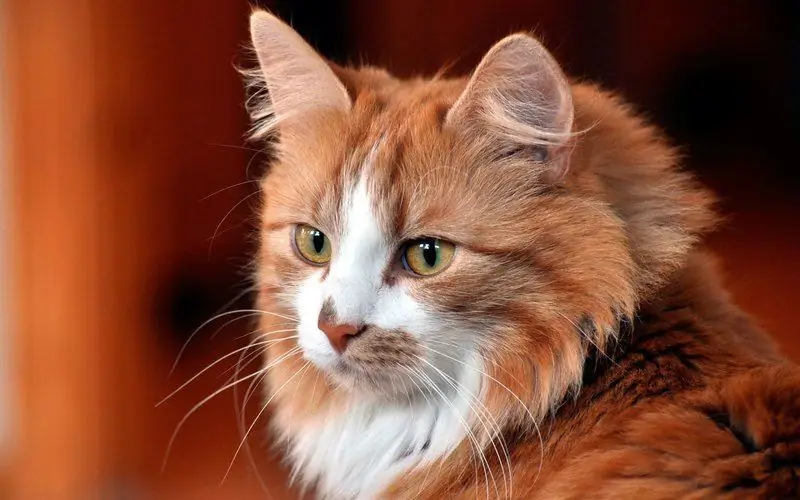
The causative agent of feline trichodectosis looks like the main symptoms. Complications of trichodectosis. How to detect and cure. Prevention of trichodectosis
How To Remove Fleas From Cats And Cats At Home: How To Get Rid Of Them From Kittens And Adult Animals By Folk And Other Means, Photo
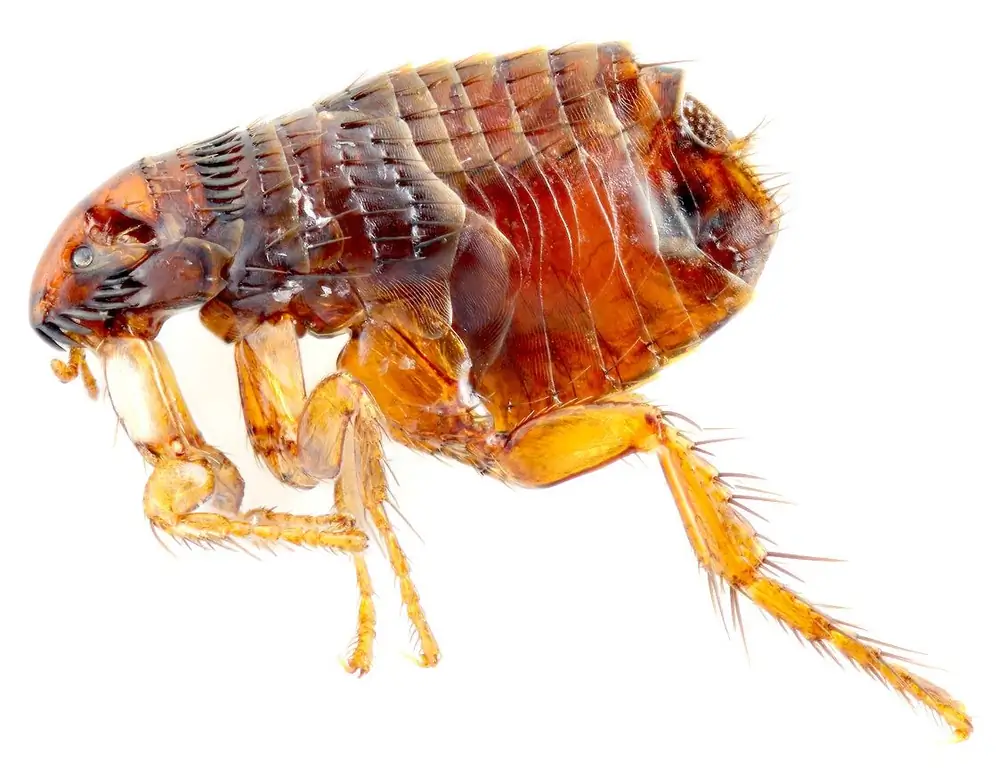
Flea life cycle. What is their danger to a cat? How to destroy fleas: drugs, folk remedies. How to prevent your pet from getting infected
Deprive Cats And Cats (shearing And Other Species): What It Looks Like, Signs, Treatment Of Kittens And Adult Animals At Home, Photo
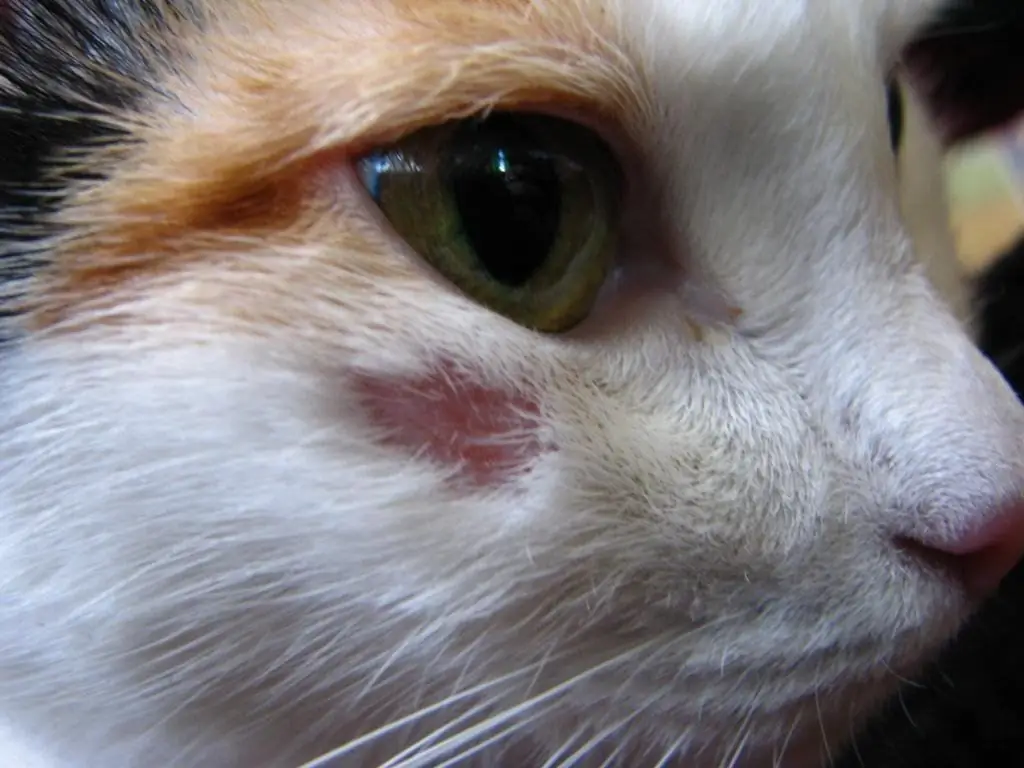
How does shingle manifest in cats? The causative agent and types of the disease. Features of the course of the disease. Treatment methods and prognosis. Deprivation prevention. Reviews
Diseases Of The Eyes In Cats: Photos Of Symptoms, Diagnosis And Treatment (including At Home), Recommendations Of Veterinarians
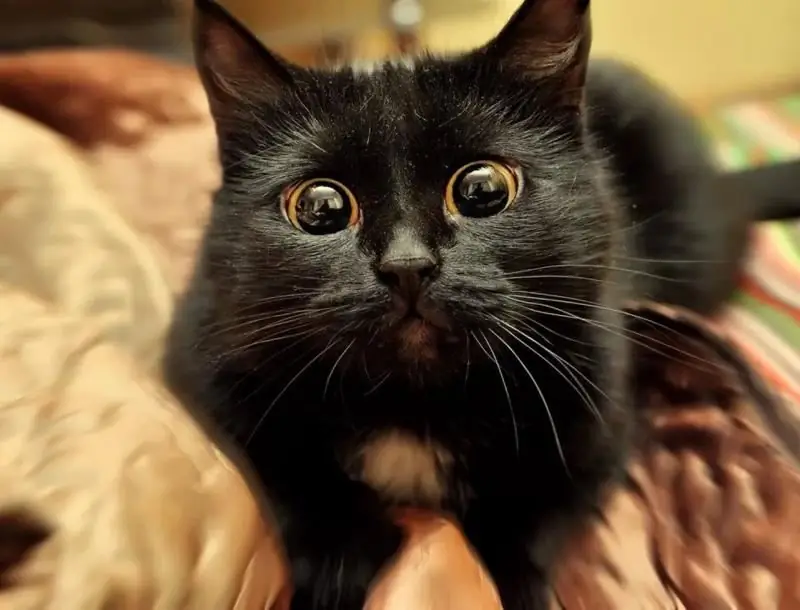
What eye diseases are found in cats? How do they manifest. Treatment rules. Animal care during therapy. Prevention. Veterinarian recommendations
Red Gums In Cats (including Gingivitis): Symptoms, Photos Of Redness Around The Teeth, Diagnosis And Treatment At Home
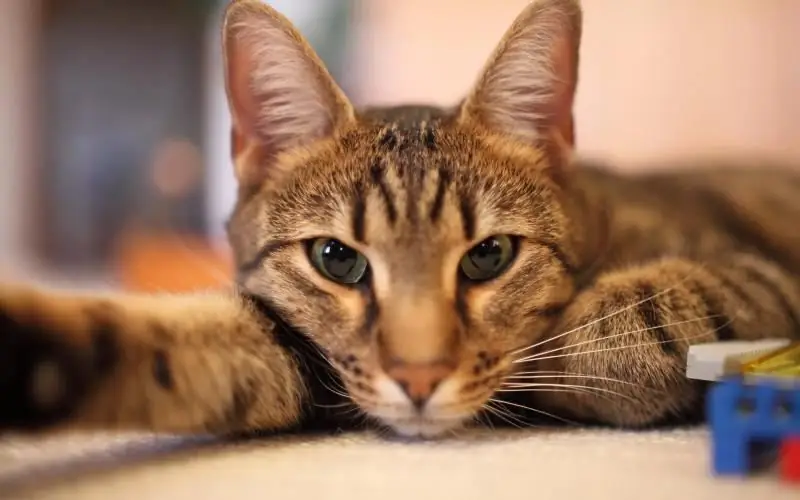
What do red gums look like in a cat? What conditions may be a symptom of redness. Types of gingivitis and their causes. How to treat pathology. Prevention
